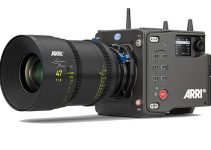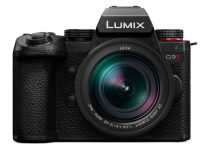Sometimes when you upgrade to the next-gen, you’re going to see a drastic improvement, and other times it just isn’t really worth it. Fortunately, Sony has always pushed their A7S series of cameras as far as they can with subsequent releases.
But just because we might see a little improvement here and there, an increase in low-light performance, better codecs, higher resolutions, higher frame rates, better battery life, better AF performance, and a Raw output, does that REALLY mean this next camera is really any better? Well, yeah. Of course, it does.
Although there still maybe a few little annoyances here and there, the Sony A7S III offers so much more functionality than the previous model, and the low-light performance is worlds apart. Harv Video/Audio Stuff made this great comparison to show you just how much brighter things are looking with the A7S III.
Despite the upgrade, the Max ISO of 409,600 is still absolutely awful and if you had purchased this camera with the intention of being able to film in rooms with almost absolutely no light, the A7S III won’t offer any improvement for you.
One thing that is way more obvious to see on the A7S III in those absurdly high ISOs is that the A7S III uses a lot more noise reduction in high ISOs and the results are very apparent in the image.
There is no way to turn off this noise reduction, without recording raw to an external recorder, and it is something Sony really needs to fix in their next update.
Other than that, the A7S III bests the A7S II in every single way possible.
Sony A7S II Key Features
- 12.2MP Full-Frame Exmor CMOS Sensor
- BIONZ X Image Processor
- Internal UHD 4K30 & 1080p120 Recording
- S-Log3 Gamma and Display Assist Function
- 5-Axis SteadyShot INSIDE Stabilization
- 0.5″ 2.36m-Dot XGA OLED Tru-Finder EVF
- 3.0″ 1,228,800-Dot Tilting LCD Monitor
- Up to 5 fps Shooting and ISO 409600
- Price: $1,999
Sony A7S III Key Features
- 12MP Full-Frame Exmor R BSI CMOS Sensor
- UHD 4K 120p Video, 10-bit 4:2:2 Internal
- 16-Bit Raw Output, HLG & S-Log3 Gammas
- 759-Point Fast Hybrid AF
- 9.44m-Dot QXGA OLED EVF
- 3.0″ 1.44m-Dot Vari-Angle Touchscreen
- 5-Axis SteadyShot Image Stabilization
- Extended ISO 40-409600, 10 fps Shooting
- Dual CFexpress Type A/SD Card Slots
- Price: $3,498
The biggest difference you’ll notice with the A7S III is the massive increase in color information that it records with its 10-bit codec. The A7S II uses an 8-bit colors codec, which is only capable of capturing 16.7 Million colors; whereas, a 10-bit codec captures 1.07 Billion.
That is 64x the amount of color information which has a massive effect on banding, color fringing, and accuracy of the final image.
Sony’s latest model can also shoot in much lower native ISOs when filming in Slog3. Previously, the A7S II was unable to go lower than 1600 ISO in log (3200 ISO for the original A7S), but the 3rd time was the charm for Sony – the A7SIII can be lowered to 160 ISO in Slog3.
ISO values between the 2 cameras are all over the place too. The Sony A7SII appears to let in a lot more light at the exact same ISO setting, but it really just appears that they’ve adjusted the ISO values by a stop or so. This really doesn’t mean anything in the context of this review, but if you look close you might see the ISO on the II set lower at times for this review.
The A7S III also appears to have something of a dual-native ISO mode, where there is an increase in image quality after passing a certain high ISO threshold. This has not been confirmed by Sony, so it could just be wishful thinking or a little accidental software magic.
What the A7S III does have is a backlight illuminated sensor which actually means that the photodiodes are in front of the metal wiring, unlike a front-side illuminated sensor. Since there is less for the light to pass through before it hits the sensor, there should be at least some noticeable improvement just from this advancement.
Having a back-side illuminated sensor can also mean that the size of the photosites could be increased, allowing even more light to be captured. We might see future sensors from Sony that boast even more amazing low-light capabilities.
As you can see, Sony has been hard at work to get this camera where they felt it needed to be, and the improvements to low-light are breathtaking.
What’s more, the accuracy is not much better, and they’ve managed to fix that awful warm bias that occurred when the A7S II was pushed higher.
But still, with everything there is a limit and the limit for both cameras appears to be 25,600 ISO for a linear profile and 80,000 ISO for a log profile.
It performs better in that the images are cleaner, more colorful, and more accurate than the original but if you’re gaging it at just ISO sensitivity it is about the same.
Does anyone REALLY need to shoot at a clean 409,500 ISO? If so, you’ll probably have to wait for the A7S XIII.
[source: Harv Video/Audio Stuff]
Order Links:
Disclaimer: As an Amazon Associate partner and participant in B&H and Adorama Affiliate programmes, we earn a small comission from each purchase made through the affiliate links listed above at no additional cost to you.



